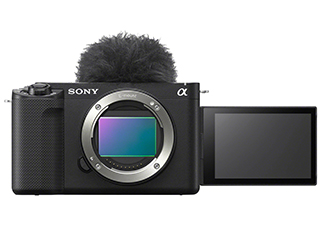
Author Archives: Administrator


Fujifilm launches X-Pro3 mirrorless camera
At the back, the Fujifilm X-Pro3 has an all-new look and feel with a tilting LCD monitor that fits flush on the rear side and can be flipped around 180 degrees. The LCD monitor houses the 1.28-inch LCD panel at the back that displays shooting settings even if the camera is turned off. This brings a retro-style feel. According to the company, the tiny alternate screen can be set in a ‘Classic’ mode that displays the Film Simulation mode selected, that looks similar to the packaging icon of the corresponding photo film. Users can also select the ‘Standard’ mode on the LCD panel to view the current shutter speed, aperture, and other shooting settings, all without opening the primary LCD monitor. Fujifilm reportedly has removed the previous four-way controller set that was available on the X-Pro2. Instead, there are distinct buttons to select appropriate settings just like how a photographer adjusts the images on a film camera.
At the top, there are controls to adjust ISO settings and shutter speed. The Fujifilm X-Pro3 has a back illuminated 26.1MP X-Trans CMOS 4 sensor that is powered by the X-Processor 4 image processing engine, which was seen on the Fujifilm X-T3 and X-T30 in the past. The camera also has the Advanced Hybrid Viewfinder that can be enabled as an optical viewfinder (OVF) or an electronic viewfinder (EVF). To simulate the colour negative film-like experience, the X-Pro3 reportedly has the Classic Neg mode that is added along with the Film Simulation mode. There are also basic mirrorless camera functions such as HDR Shooting and Multiple Exposure. Further, the X-Pro3 supports up to 4K video recording with 30fps frame rate. In terms of connectivity, the Fujifilm X-Pro3 has a USB Type-C port and a 2.5mm jack for microphone and wired remote attachments. The camera also has Bluetooth support and includes two UHS-II SD card slots.
The X-Pro3’s price is set at roughly Rs. 1,27,600 for the regular Black colour option while its DR Black and DR Silver colour variants are priced at Rs. 1,41,800 approximately. The regular Black model will go on sale in the US on November 28. However, its DR Black and DR Silver options will be available for purchase from December 12. There is no word on India launch as of now.

GoPro Max Review
“Fujifilm will not be entering the Full-Frame sensor market” – Mr. Haruto Iwata, Managing Director, Fujifilm India
With global market trends tilting towards Mirrorless Full Frame cameras, Bhavya Desai, Editor Asian Photography magazine, speaks with Mr. Haruto Iwata, Managing Director, Fujifilm India about their medium format camera, future plans, business model and more.
-
At a time when manufacturers are focusing on Full-frame, Fujifilm is going Medium format. What is the reason for the same?
A camera is a tool for creating artwork and the objective is to create photographs. Fujifilm has always stood by this philosophy when manufacturing photographic equipments. The entry point for the medium format has been high for so long and has been alluring professionals for decades. We always want to supply the best solution with the latest technology; Fujifilm wants to be in the hands of everyday professionals.
We offer a wide range of cameras for both professionals and amateurs including the X Series that has an APSC sensor and GFX Series, which is a medium format camera with a sensor 1.7 times bigger than full frame size sensor (found in DSLR). Our GFX range caters to the commercial photography segment and X Series caters to amateurs and professionals looking for affordable cameras offering great performance. Fujifilm will not be entering the Full-Frame sensor market, as we have good APS-C and medium format systems which is a good balance.
We recently launched the GFX100 – world’s first consumer mirrorless camera that supports a 102 Million Pixel sensor. With this launch, we have achieved a great milestone in our digital camera business which will further enhance our presence in the Digital Camera Market in India.
-
While Medium Formats that Fujifilm offers are more economical as compared to the other competitors in the segment, how do you feel the Indian Photographers are warming up to this format?
The globalisation and democratisation in the availability, access and practice of photography and videography have made these (forms of) arts unique. Today, almost anyone with the inclination can be a good visual artist and can make a statement. Technology has been a great enabler, but this would be a rather simplistic way to put it. The adoption of breakthrough technologies and the adopters are playing an equal role in shaping not just the evolution of these technologies, but also the landscape of its use, over time.
Fujifilm’s medium format camera i.e. the GFX series, not just caters to high-end professional users but also other photography enthusiasts at the amateur level. The prime target consumers for Fujifilm’s Medium format cameras are professional photographers working in commercial industries like fashion and advertising. This is for all the people who want more details on their images; which are meant not to just stay on the monitor but go beyond that.
-
What is the company’s roadmap for the coming year?
With over 80 years of existence, Fujifilm has been a pioneer in imaging technology and has constantly displayed an innovative line-up of products offering Imaging and Print-Related Solutions for Consumers and Businesses.
We want to give the large number of Indian photo lovers lots of different kinds of camera options. Over the years, we have come up with some of the best-in-class technology. With the launch of the GFX100, we achieved a great milestone in our digital camera business, which will further enhance our presence in the Digital Camera Market in India. Our Instax range of Instant cameras has also gained much interest from young consumers who seek to gain new experiences and find creative ways to enjoy photography. We recently associated with Mr. Dabboo Ratnani to promote our GFX range of cameras and Alia Bhatt to promote our Instax cameras.
In the coming year, we will be focusing on expanding our range of products across categories. We will be introducing new products for the Image Capturing Business like X-Series range of mirrorless cameras and Instax range of Instant Cameras alongside our Photo Imaging Business, which includes a range of print solutions, especially for the wedding market. We will also be focussing on strengthening our Medical division with the introduction of highly advanced systems for the Healthcare Sector. The Graphic Arts division will also see new products with our Wide Format Ink Jet Printers. We aim to achieve double-digit growth this year; for which we will be emphasizing on ‘Aggressive top and bottom line performance’.
-
With Fujifilm being primarily the only brand when it comes to instant cameras these days, how has the response for the Instax cameras been thus far?
Fujifilm’s Instant Camera range has been a revelation for us in India, the selfie generation of the country resonates deeply with our range of Instax cameras. The fact that Fujifilm’s instant camera range starts at a very affordable pricing in India, with the brightest and quirkiest designs, makes the Instax line a popular gift for tweens and teens.
Instax has certainly come a long way, ever since its launch back in 1998. Today, it is a global hit with a presence in more than 100 countries and regions with approximately 40 million units sold worldwide. Its quirky design and retro look has helped the brand carve a winning niche for itself.
In India, we further aim to enhance awareness for Instax range of cameras through our strategic collaborations with one of the most followed Indian celebrity, Alia Bhatt. She perfectly complements the brand attributes of Instax, which is indeed a charming product with which one can shoot, print, and share an original instantly.
-
While Fujifilm as a brand continues to be great at designing and integrating products, have they considered designing and manufacturing sensors? If not now then maybe in the future?
Currently, there are no plans for this, but we will keep you updated on this.
-
Where do you think the next impetus in the industry will come from?
The photography industry is changing dynamically with each passing year. New applications, mobile apps and printing technology are redefining the ways consumers experience images. The Indian market for photo taking is growing exponentially with the growth of DSLRs, Mirrorless cameras and smartphones.
Additionally, increasing interest in the market for better, more intuitive and intelligent appliances that complement the evolving lifestyles of people is opening a huge opportunity in our industry for consumers who are looking to upgrade their style of capturing moments. Fujifilm is strongly committed to the Indian market and has contributed significantly towards delivering professional cameras to not only experts but also camera enthusiasts. Hence, Fujifilm is constantly bringing excellence to the imaging industry through rapid innovations in technology.
-
Do you see DSLRs running out of system by the end of the year?
Currently, we are witnessing a radical evolution in the digital camera market. The trend of using large, complicated DSLR with a bag of heavy lenses is moving towards a lightweight and compact range of mirrorless cameras. These range of cameras is primarily being preferred due to their ease of use and compact body. With faster performance and weight almost 50% lighter as compared to a DSLR camera, mirrorless camera is a popular choice among users.
Over the last five years, we have witnessed a gradual shift from DSLR to mirrorless, which currently stands at 20% share in value. We certainly expect the mirrorless category to increase to 49% share in value by 2020. Fujifilm being a pioneer in this segment certainly has very aggressive plans to strengthen their position in the Indian mirrorless market. We plan to capture 20% market share in the Indian mirrorless camera market in the next 3 to 4 years promoting the X and GFX Series that continues to evolve with outstanding image quality, fast speed and mobility.
-
What are the marketing plans that Fujifilm will undertake for the upcoming festive season?
We plan to keep our digital media channels booming with festive activities, we will continue to conduct workshops, photo walks and touch and try sessions throughout the country to educate people about our products and offerings.
In the coming festive season we have various consumer offers that will excite our customers. In the X Series range of cameras we have consumer offers, several kit combos in each of the X-Series products this festive season.

Nikon announces APS-C Mirrorless Camera, Nikon Z50
Nikon has announced the Nikon Z50 entry-level mirrorless camera. The Z50 is available for a cost of approx. Rs 61,200 for body-only. The Nikon Z50 includes a 20.9-megapixel APS-C CMOS sensor with Nikon DX-format, hybrid-AF autofocus and Eye-AF. The camera is powered by an EXPEED 6 image-processing engine with a high standard sensitivity of up to ISO 51,200 for low light situations. The Z50 can record 4K videos at 120p slow-motion, time-lapse and interval timer modes with in-camera video trimming and up to 20 Creative Picture Controls. The camera offers built-in stabilisation for smooth footage while shooting Full HD or 4K videos. There’s a 3.2-inch flip-down LCD touchscreen which can be used for selfies and vlogging. The camera also has 2360k-dot electronic viewfinder offering a 209-point Hybrid AF System and coverage of approximately 87 percent horizontally and 85 percent vertically. Connectivity options include WiFi, Bluetooth and a UHS-I SD card slot. The camera can be connected to smartphones using the SnapBridge app for sharing images and video. Users can also transfer video to their smart device with support for RAW images and advanced remote capture. The Nikon Z50 can be bundled with the new Nikkor Z DX 16-50mm standard zoom and the Nikkor Z DX 50-250mm telephoto zoom lenses. When paired with the new lenses, Dual Detect Optical VR is enabled on the Z50 to help avoid camera shake when shooting. The new lenses offer in-lens optical Vibration Reduction (VR) technology with camera shake compensation equivalent to 4.5 stops and 5.0 stops respectively. The Z50 is also compatible with the current line of Nikkor Z lenses through the Mount Adapter FTZ. Nikon Z50 20.9-megapixel mirrorless camera is available for a price of approx. Rs 61,200 for body-only from November. The Z50 with a one-lens kit with the Nikkor Z DX 16-50mm f/3.5-6.3 VR lens will be available for approx. Rs 71,200 while the two-lens kit with both the Nikkor Z DX 16-50mm f/3.5-6.3 VR and Nikkor Z DX 50-250mm f/4.5-6.3 VR lenses can be purchased for approx. Rs 96,100.
OnePlus 7T or OnePlus 7 Pro: Which should you Buy?

Fujifilm India opens its first ever co-branded Wonder Photo Shop in Bengaluru in association with GK Vale
Fujifilm India launched its first co-branded Wonder Photo Shop in Bengaluru in association with GK Vale, making it the fifth ‘Wonder Photo Shop’ concept store of its kind in India for the ultimate photo printing and brand experience. It is located at Church St, Shanthala Nagar, Ashok Nagar, Fujifilm aims to celebrate Bengaluru’s love for photography, art and culture. The store embodies a holistic vision of photography, from picture taking to printing, sharing and social networking, as a creative life experience. With the theme ‘Photo Renaissance’, the store offers an opportunity to experience an immersive and interactive retail space with Fujifilm’s state-of-the-art products and services to meet the aesthetic taste of the youth of our country. With this new store, Fujifilm aims to provide a learning center, giving customers an opportunity to experience the various product features thus enhancing the customer experience. At the co-branded store, consumers can indulge in the full range of instax cameras and Share Printer SP-2, the award-winning line of X Series digital cameras and high-quality lenses on display. Additionally, customers can witness the true photographic heritage of Fujifilm and develop their own vision to creatively use their photos.
Speaking on the occasion, Mr. Haruto Iwata, Managing Director, Fujifilm India said, “We are happy to open our first co-branded Wonder Photo Shop in association with GK Vale. At Fujifilm, we are passionate about the preservation of people’s memories, and keeping the spirit and culture of photography alive. We want to inspire people to have fun, to enjoy photography and to learn more about what they can do with their pictures and their cameras. With our new Wonder Photo Shop, we are committed to offer our customers a place that offers all experiences in one from picture taking to picture making”.
Commenting at the inauguration of the store Mr. Anand Sukumar from GK Vale said, “We are extremely excited about our association with Fujifilm India. We are happy to open our doors to the customers and offer them an integrated photography experience in Bengaluru – a wonderland of opportunities. Being in the business for 110 years, we understand the ever changing needs of customers extremely well. Fujifilm’s wonder Photo shop store is a fantastic example of what can happen when passion meets hobbies, experiences, fun, profession and memories.”
“The Wonder Photo Shop puts the customer at the heart of the experience and provides a wonderful place for customers to unlock their creativity and develop a refreshing perspective on photo printing. With more than 80 years of history and experience in the photo industry, we are confident that our latest Wonder Photo Shop will strengthen our presence in the country. We are committed to preserve the culture of photography and Wonder Photo Shop will act as a catalyst to achieve that goal,” added Mr. Centhil Nathan, SVP and Head-Photo Imaging at Fujifilm.

Raghu Rai laureate of the first edition of the Academy of Fine Arts Photography Award – William Klein
The jury of the 2019 edition named the photographer and photojournalist Raghu Rai, laureate of the first edition of the Academy of Fine Arts Photography Award – William Klein.
The Academy of Fine Arts Photography Award – William Klein was created in 2019 by the Academy of Fine Arts in tribute to William Klein, photographer, painter, visual artist, graphic designer, director of documentary, advertising and fiction films.
As a consecration award, this prize is intended to reward a photographer for his/her entire career and commitment to photography. It rewards one photographer of all nationalities and ages. Endowed with the sum of 120,000 euros, it is awarded every two years, alternating with the Photography Award Marc Ladreit de Lacharrière.
An exhibition retracing the career of the photographer will be held from October 24, 2019 to November 24, 2019 in the exhibition space of the Academy, at the Palais de l’Institut de France.
The jury of the 2019 edition :
• Laurent Petitgirard, Perpetual Secretary of the Academy of Fine Arts, co-chair
• Zhong Weixing, founder of the Chengdu Contemporary image museum, co-chair
• William Klein, Honorary Member
• Yann Arthus-Bertrand, Bruno Barbey, Jean Gaumy, Sebastião Salgado, members of the photography section of the Academy of Fine Arts
• Jean-Luc Monterosso and Bernard Perrine, correspondents of the photography section of the Academy of Fine Arts
• Alessandra Mauro, curator
• Alberto Anaut, president of PhotoEspaña and director of La Fábrica.
Born in December 1942 in Jhang (British India – current Pakistan), Raghu Rai qualified at civil engineer, started photography at the age of 23 in 1965. He joined The Statesman newspaper as their Chief photographer (1966 to 1976), and was then Picture Editor with Sunday – a weekly news magazine published from Calcutta (1977 to 1980).
In 1971, impressed by Rai’s exhibition at Gallery Delpire, Paris, Henri Cartier Bresson nominated him to Magnum Photos of which he is still a partner today. In 1982, he took over as Picture Editor-Visualiser-Photographer of India Today, India’s leading news magazine. He worked on special issues and designs, contributing trailblazing picture essays on social, political, and cultural themes of the decade (1982 to 1991).
In the last 18 years, Raghu Rai has exclusively devoted his work to India. He has produced more than fifty picture books on different aspects/life and themes on India : Delhi, The Sikhs, Calcutta, Khajuraho, Taj Mahal, Tibet in Exile, Mother Teresa and so on. His thorough work on the 1984 Bhopal Gas Tragedy, a special assignment from Greenpeace International, was compiled into a book with 3 sets of exhibitions traveling from 2002 to 2005.
Many exhibitions have been dedicated to him around the world including retrospectives at Arles Photography Festival in 2007, at the National Gallery Of Modern Art of New Delhi in 2008 or whether at the Aicon Gallery of London in 2011.
He was awarded the Padmashree in 1972, one of India’s highest civilian awards ever given to a photographer, for the body of works he produced on the liberation war of Bangladesh and its refugees. In 1992 he was awarded Photographer of the Year in the United States for the story Human Management of Wildlife in India published in National Geographic. In 2009 he was conferred Officier des Arts et des Lettres by French Government. In 2018, he has been honored by Lucie Foundation, New York as Master of Photojournalism.
His photo essays have been published in many of the world’s leading magazines and newspapers. In 2012, Raghu Rai created the Raghu Rai Center for Photography to share his 50 years of knowledge and experience with the young generations.
Raghu Rai lives in New Delhi with his family and is currently working on his 57th publication.

Canon launches the EOS C500 Mark II
Canon launched its next version of Cinema EOS System camera – the EOS C500 Mark II. It is created by expertise and technical knowledge by Canon’s innovative products, and built on the basis of Cinema EOS System, the EOS C500 Mark II is a small and easy to carry 5.9K Full Frame camera. The EOS C500 Mark II’s Full Frame sensor is powered by Canon’s new DIGIC DV 7 processor. Supporting 5.9K internal Cinema RAW Light and 4K 4:2:2 10bit XF-AVC recording, this camera enables professionals to explore Full Frame, cinematic image. It is the first camera in the range with the ability to record 5.9K Cinema RAW Light onto new, faster storage media and CFexpress card slots. Providing professionals with greater flexibility and efficiency and recording of the same file format is also possible to dual CFexpress card slots. The compact size of the camera provides cinematographers with unique creative freedom. With its flexible, modular design, professionals can configure the camera with different expansion units to suit production demand. The EOS C500 Mark II is the first Cinema EOS System camera to feature a user interchangeable lens-mount for EF Cinema Lock, and PL, giving professionals a wide variety of lens selection. It is also the first Cinema EOS System camera to support Electronic Image Stabilisation. The EOS C500 Mark II supports user LUTs, allowing cinematographers to apply or create their own LUTs. Loading them onto the camera for precise-look monitoring, cinematographers can also apply various LUTs for each time period. With the added LUT button, professionals have greater flexibility. The EOS C500 Mark II also includes high frame rate recording up to 50/60 fps in 5.9K resolution with the Cinema RAW Light codec.

Nikon is Developing the D6 Digital SLR Camera and the AF-S NIKKOR 120-300mm F/2.8E FL ED SR VR Telephoto Lens
Nikon recently announced the development of the Nikon D6 professional DSLR camera and the AF-S NIKKOR 120-300mm f/2.8E FL ED SR VR telephoto zoom lens.
Nikon released the D1 digital SLR camera in 1999, making 2019 the 20th anniversary of the single-digit D series. According to the company, thanks to the imaging know-how cultivated over Nikon’s long history in camera development, Nikon’s professional DSLR cameras have continued to evolve by introducing some of the industry’s most advanced technologies and responding to the strict demands of professional photographers with the ultimate in performance and reliability, even in the most severe conditions. With the D6, Nikon is currently developing its most advanced DSLR to date.
This year also marks the 60th anniversary of the Nikon F mount. The new AF-S NIKKOR 120-300mm f/2.8E FL ED SR VR F mount lens that Nikon is developing will provide professional photographers in fields such as sports photography with even greater support, claims the company.
Nikon also says that it is striving to expand possibilities for imaging expression and leading the way in imaging culture with both DSLR and mirrorless camera systems, as well as a rich lineup of NIKKOR lenses. Details including release dates, pricing and specifications for these products will be announced at a later date.
